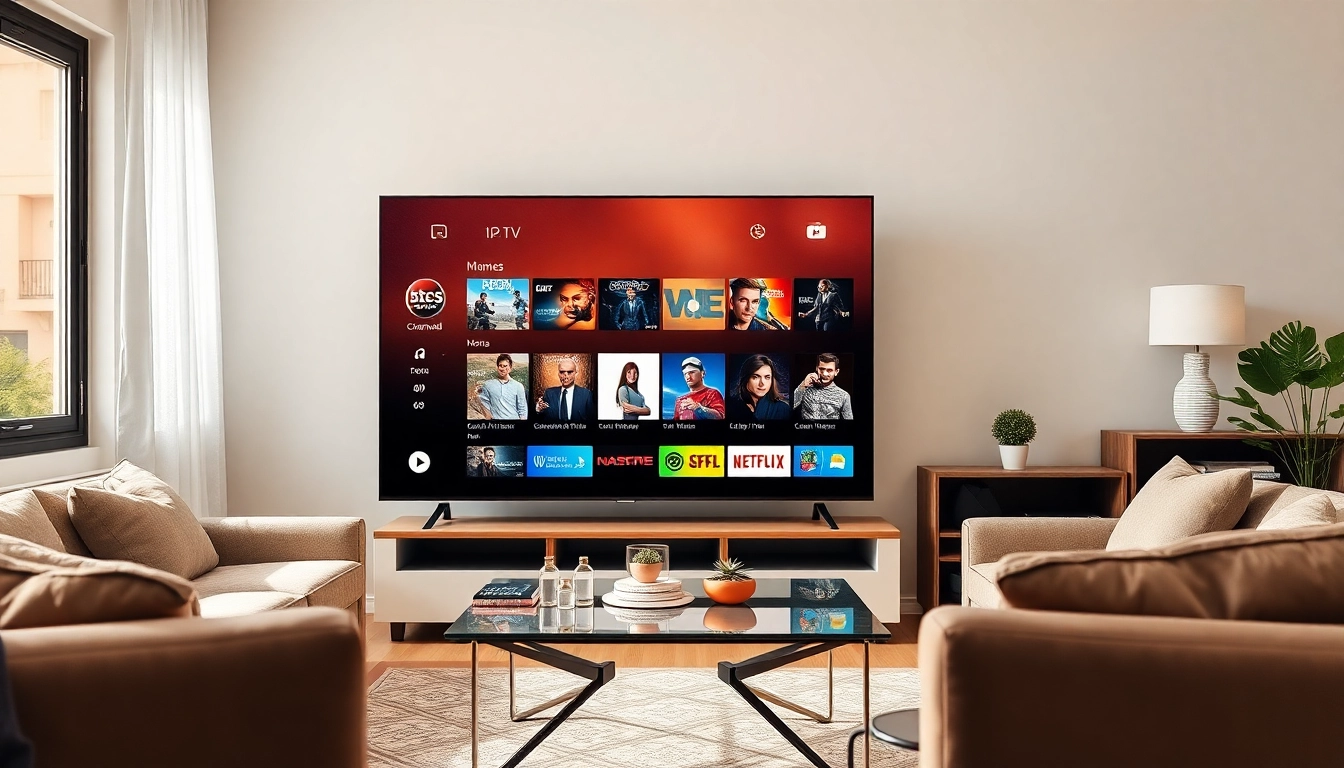The Basics of Professional Graphic Design
Graphic design is a multi-faceted discipline that plays a crucial role in creating visual communication that captivates, informs, and influences audiences. Whether it’s for branding, advertising, or training materials, effective graphic design relies on a foundational understanding of design principles, tools, and the nuances of typography. For businesses aiming for impactful visual communication, Professional Graphic Design is not merely an option but a necessity.
Understanding Graphic Design Principles
The bedrock of graphic design is its principles, which serve as rules or guidelines that inform how visuals are composed and utilized. Key principles include:
- Balance: Symmetrical and asymmetrical balance help create a sense of stability in a design.
- Contrast: Utilizing different colors, shapes, and textures can draw attention and highlight important elements.
- Emphasis: This principle focuses on the focal point of a design, ensuring that the viewer’s attention is directed where it is intended.
- Movement: The flow created by the arrangement of elements guides the viewer’s eye through the design.
- Repetition: Consistency in style, color, or typography helps establish a cohesive look.
- White Space: Effective use of negative space helps avoid clutter and improves readability.
Key Tools and Software for Designers
In today’s digital age, graphic designers rely on various software tools to bring their visions to life. Among these are:
- Adobe Creative Suite: This includes Photoshop for image editing, Illustrator for vector graphics, and InDesign for layout design.
- Canva: A user-friendly, web-based tool perfect for beginners and small businesses needing quick graphics.
- Sketch: A vector graphics editor that is popular among web and interface designers.
- CorelDRAW: Known for its versatile vector graphic design capabilities, particularly in print design.
- Figma: A cloud-based design tool allowing real-time collaboration, ideal for UI/UX projects.
The Role of Typography in Graphic Design
Typography is the art of arranging type in a visually appealing and readable manner. It is one of the most critical aspects of graphic design since it can significantly influence how the message is perceived. Important considerations in typography include:
- Font Selection: Choosing the right font can evoke different feelings and align with the brand’s identity.
- Hierarchy: Establishing a typographic hierarchy guides the viewer through varying levels of information.
- Alignment and Spacing: Proper alignment and spacing enhance the layout’s overall structure and readability.
- Legibility: Always ensure that text is easy to read on different devices and formats.
Common Challenges in Professional Graphic Design
Despite the creative nature of graphic design, designers frequently encounter challenges that can hinder their projects. Understanding these obstacles is vital for any professional in the field.
Navigating Client Expectations
Graphic designers often face the challenge of managing client expectations. To navigate this, clear communication from the beginning is crucial. Consider these strategies:
- Initial Consultations: Use this opportunity to understand the client’s vision and requirements thoroughly.
- Clear Proposals: Create detailed proposals that outline project scopes, timelines, and costs to avoid misunderstandings.
- Regular Updates: Maintain consistent communication throughout the design process to keep clients engaged and informed of progress.
Maintaining Creativity Under Pressure
Creativity is often challenged by tight deadlines and workload pressures. Here are a few techniques to foster creativity in high-stress scenarios:
- Scheduled Breaks: Taking short breaks during extensive design sessions can recharge creativity.
- Mind Mapping: Use mind maps to visually outline thoughts, which can lead to innovative ideas.
- Inspiration Boards: Curate inspiration from various fields and styles to stimulate fresh thinking.
Adapting to Design Trends
The design landscape is constantly evolving, and staying updated on trends can feel overwhelming. It’s imperative to find a balance between following trends and maintaining personal style. Strategies include:
- Continuous Education: Engage in online courses or workshops to learn about emerging design trends.
- Follow Industry Leaders: Subscribe to blogs, newsletters, and social media channels of acclaimed designers and agencies.
- Experimentation: Allow yourself to play with new styles in personal projects without the pressure of client expectations.
Best Practices for Graphic Designers
Certain best practices can drastically enhance a designer’s work efficiency and output quality. Below are fundamental practices every designer should adopt.
Creating a Strong Portfolio
Your portfolio showcases your skills and creativity to potential clients. Elements of a strong portfolio include:
- Diversification: Showcase a range of styles and types of work (logos, websites, print materials).
- Case Studies: Detail your design process in case studies to illustrate your problem-solving abilities.
- Presentation: Ensure that your portfolio is visually appealing and easy to navigate, reflecting your design aesthetic.
Effective Communication with Clients
Communication is key in understanding client needs and delivering satisfactory results. Here are ways to improve client communication:
- Ask Questions: Don’t hesitate to ask clarifying questions to ensure you fully understand the client’s vision.
- Active Listening: Show genuine interest in the client’s ideas to foster a trusting relationship.
- Feedback Loop: Encourage feedback at different project stages to ensure alignment with the client’s goals.
Strategies for Continuous Learning
The graphic design field is ever-changing, making continuous learning essential. Follow these strategies to keep your skills fresh:
- Online Learning Platforms: Websites like Udemy, Coursera, and Skillshare offer a multitude of design courses.
- Online Communities: Join platforms like Dribbble and Behance to connect with other designers and share insights.
- Attend Workshops & Conferences: Participate in industry conferences to learn from experts and network.
Evaluating the Impact of Graphic Design
Measuring the effectiveness of graphic design plays a vital role in proving its value to clients and companies. Various methods can facilitate this evaluation.
Measuring Design Success through Metrics
Metrics allow designers to evaluate their work’s effectiveness. Here are common metrics:
- Engagement Rates: Analyze how audiences interact with your designs, particularly in digital and social media.
- Conversion Rates: Measure the number of users who take a desired action after interacting with your designs.
- Feedback Surveys: Collect feedback from clients and users regarding their satisfaction with the design.
Case Studies of Successful Design Projects
Documenting successful projects in a case study format helps demonstrate the impact of your design. Key elements include:
- Problem Statement: Identify the problem that needed addressing with your design solution.
- Design Process: Outline the steps taken to develop the design, including brainstorming and iterations.
- Results: Highlight the positive impact of the design using quantitative and qualitative metrics.
Utilizing Feedback for Improvement
Feedback serves as a pivotal tool for growth in graphic design. Embrace feedback by:
- Seeking Constructive Criticism: Invite peers or clients to provide honest opinions about your work.
- Reflecting and Adapting: Use the feedback received to make necessary adjustments and avoid repeating mistakes.
- Continuous Revisions: Iteratively refine designs based on feedback to enhance quality.
Future Trends in Professional Graphic Design
The landscape of graphic design is evolving rapidly, with new trends shaping the industry. Keeping abreast of these trends ensures that designers remain relevant and innovative.
The Rise of AI in Graphic Design
Artificial intelligence (AI) is playing an increasingly significant role in graphic design, offering tools that enhance creativity and streamline workflow. Examples include:
- AI-Powered Tools: Services like Canva utilize AI to suggest design layouts based on user input.
- Automated Design: AI can generate templates and design elements, freeing designers to focus on higher-level creative tasks.
- Analytics: AI tools can analyze user interaction data to suggest design improvements.
Sustainable Design Practices
Sustainability is becoming a critical focus within graphic design. Designers are encouraged to explore eco-friendly practices, such as:
- Digital Over Print: Opt for digital solutions over printed materials to reduce paper consumption.
- Minimalism: Adopt a minimalist approach that reduces waste and emphasizes functionality.
- Eco-Friendly Materials: When print design is necessary, choose sustainable inks and recycled materials.
Networking and Community Building for Designers
Networking is essential for personal growth and professional opportunities in graphic design. Tactics to build a strong network include:
- Industry Events: Attend design conferences, meetups, and workshops to connect with other professionals.
- Social Media Presence: Utilize platforms like LinkedIn, Pinterest, and Instagram to showcase work, engage with others, and expand your reach.
- Collaborative Projects: Partner with other creatives to work on projects that foster skill-sharing and collective growth.



